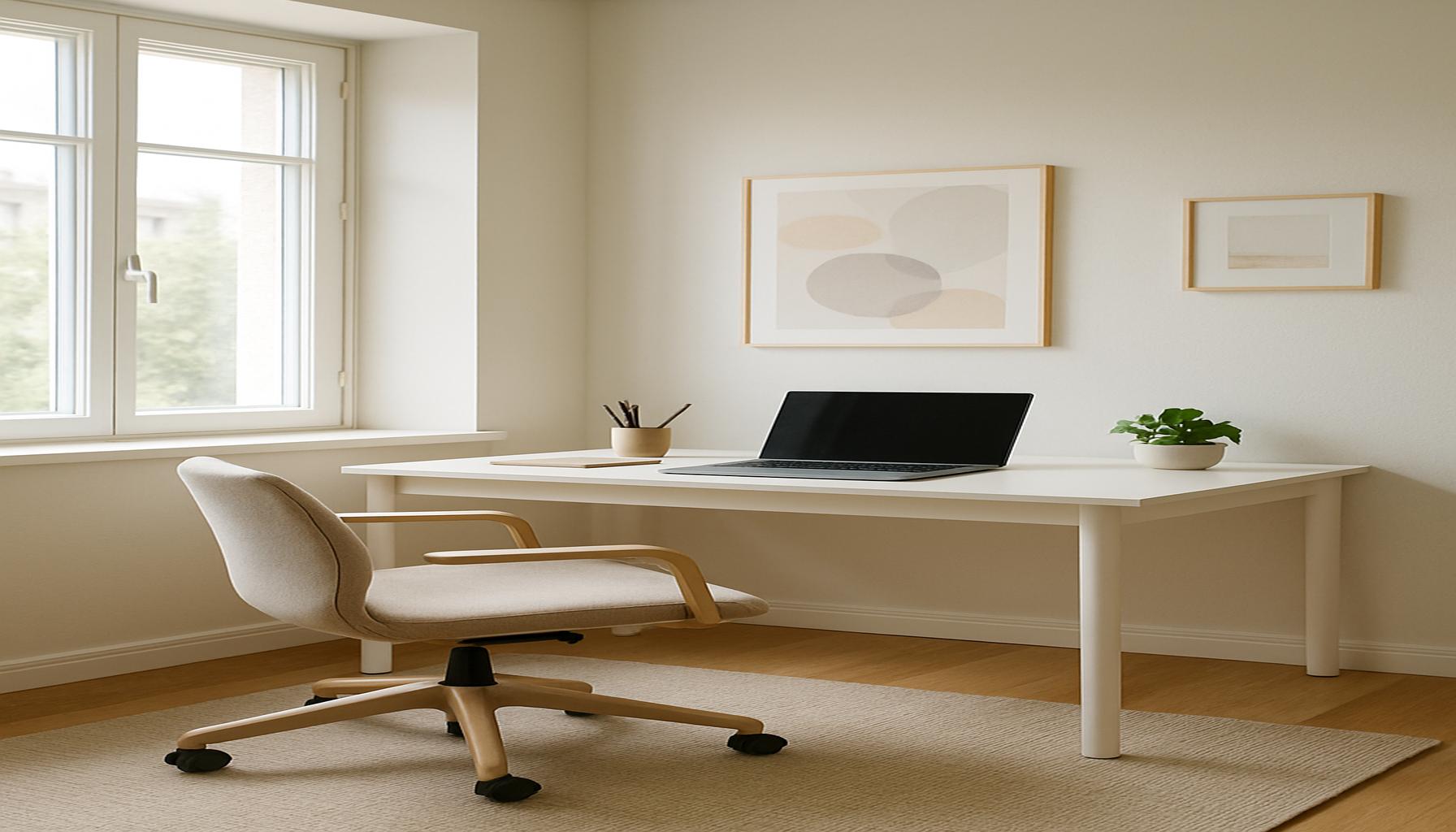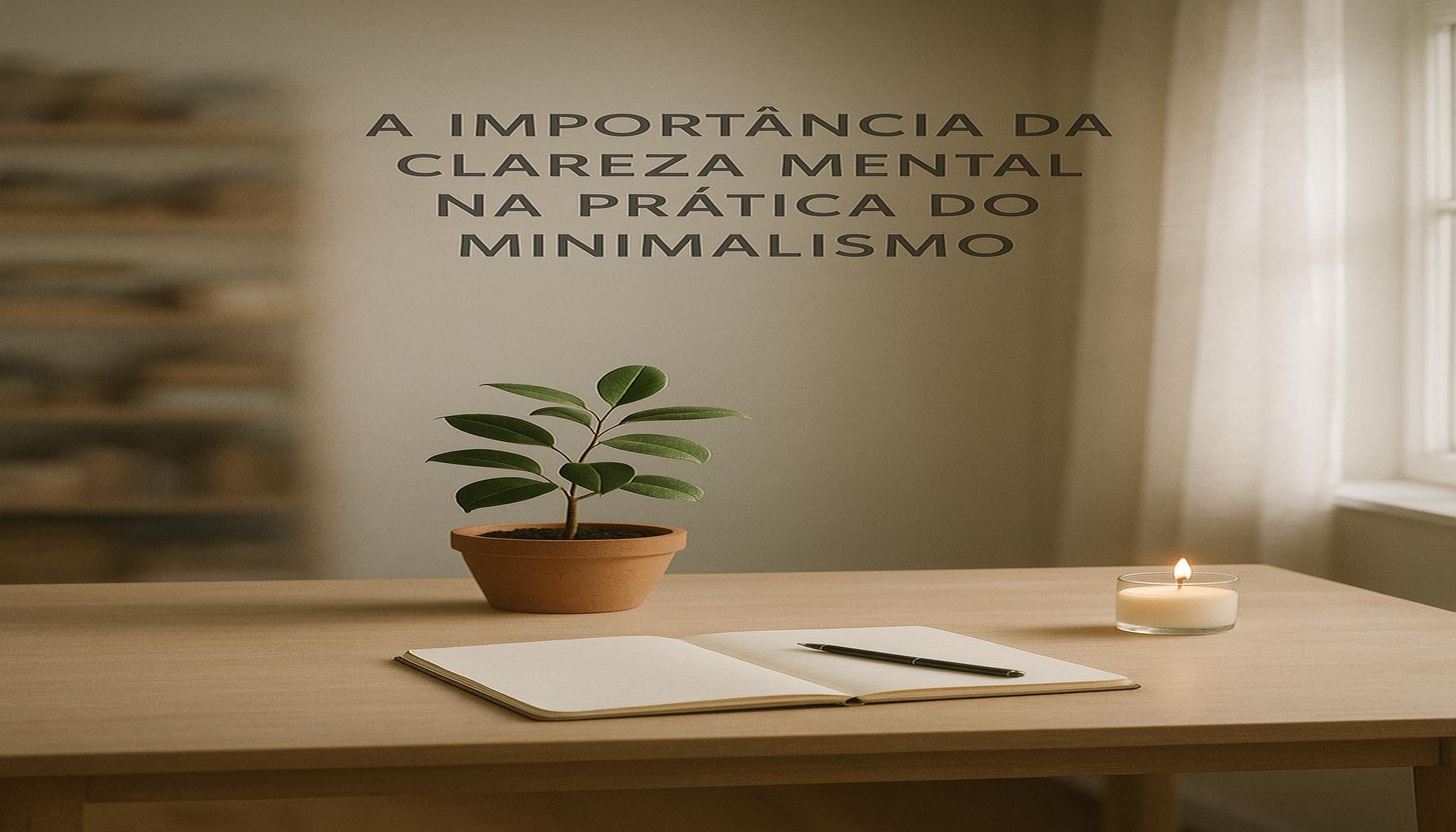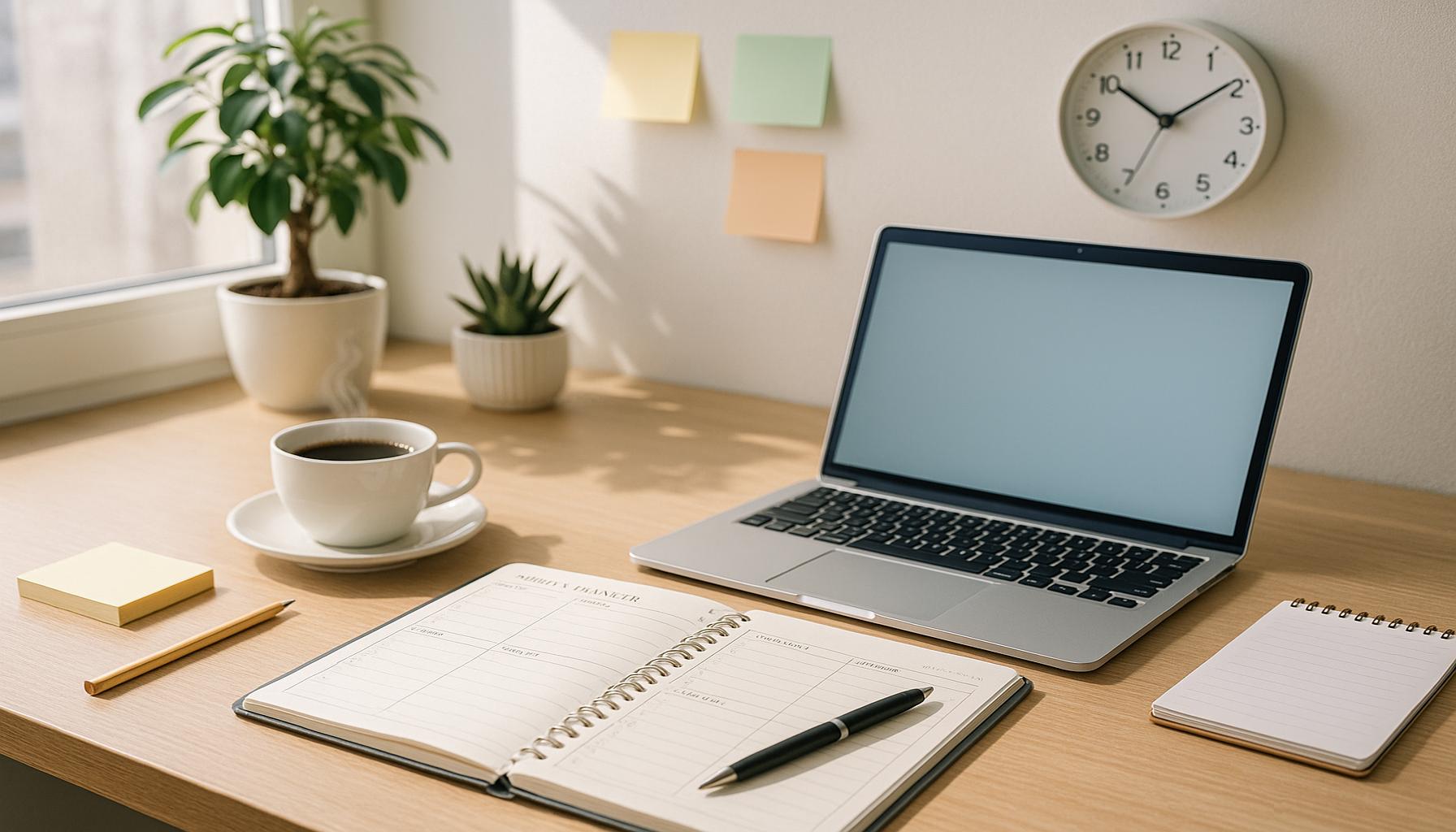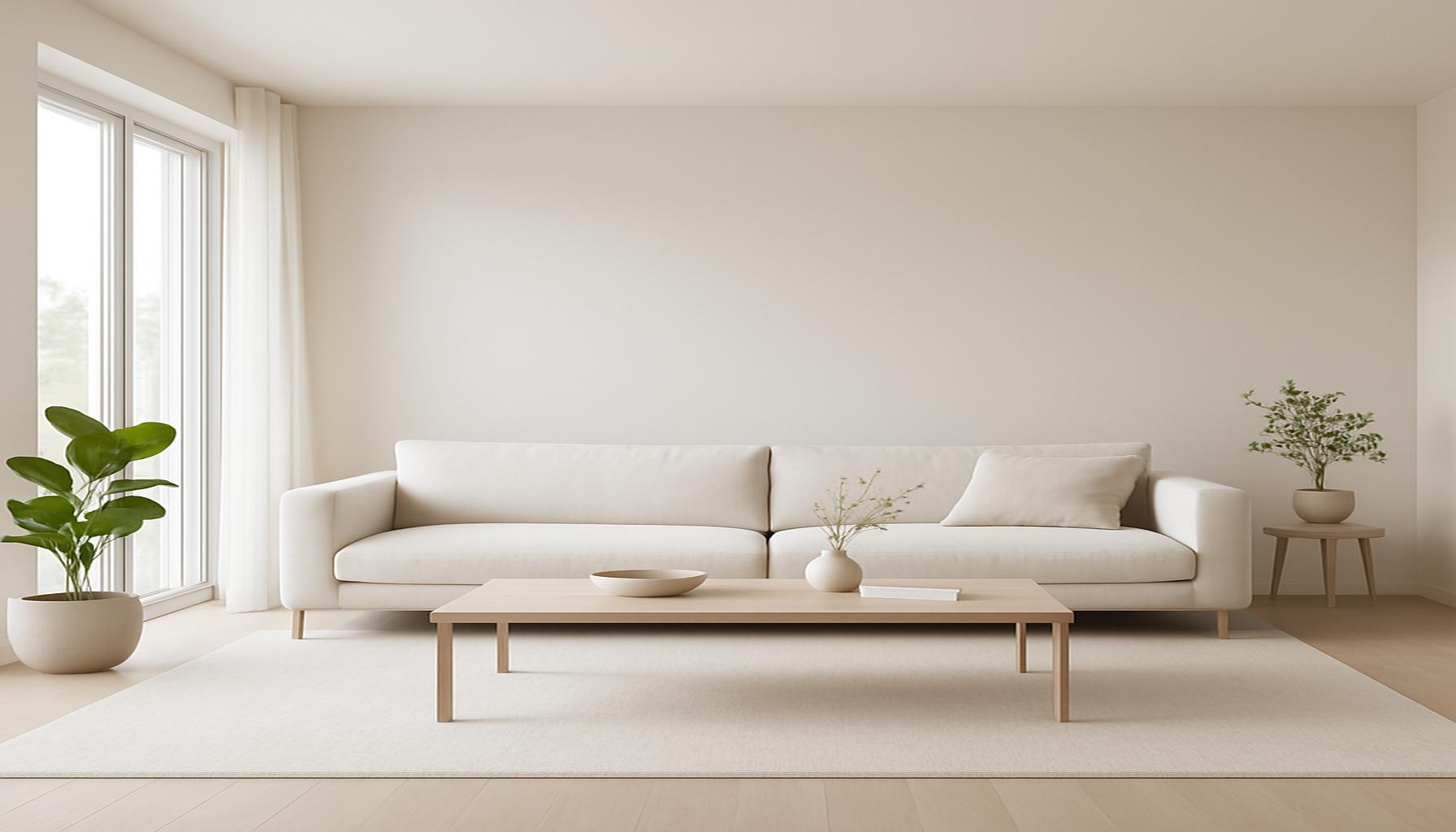Visual Organization: Creating Clear and Minimalist Environments to Enhance Focus and Creativity

Visual Organization: A Path to Enhanced Focus
In today’s fast-paced world, visual organization plays a crucial role in fostering focus and creativity. With the distractions of a cluttered environment, individuals often struggle to maintain productivity. Therefore, adopting a clear and minimalist approach can significantly change the way we work and think, offering a refreshing perspective that can transform both personal spaces and professional environments.
To illustrate this, consider the following elements that contribute to an organized environment:
- Decluttering: Removing unnecessary items can lead to a more serene space. This process transcends the mere act of cleaning; it involves reevaluating the significance of items in our surroundings. For instance, a study by the Princeton Neuroscience Institute found that clutter can overload the brain’s ability to process information, leading to fatigue. Thus, keeping only those items that truly serve a purpose can foster clarity and peace of mind.
- Color Schemes: Utilizing a calm palette can reduce anxiety and enhance creativity. Colors evoke emotional responses, and research indicates that soft blue and green hues are linked to increased concentration and reduced stress. For example, consider a home office painted in soft pastels versus one filled with bold, clashing colors; the former creates an inviting space conducive to deep work.
- Flexible Layouts: Creating versatile workspaces allows for adaptability based on task needs. Modern workspace design embraces this flexibility, allowing individuals to alternate between collaborative setups and private zones. Companies like Google and Facebook employ this practice, recognizing that changing the environment can bolster creativity and productivity based on the task at hand.
Research indicates that a well-organized environment has profound effects on our mental state. For example, studies show that:
- People in minimalist spaces report higher levels of creativity. The intentional absence of distraction in such environments can allow the mind to explore innovative ideas without the weight of visual chaos.
- Clutter can trigger feelings of stress and overwhelm. A 2011 study published in the journal Personality and Social Psychology Bulletin noted that individuals in cluttered environments are more likely to feel anxious, which in turn can inhibit cognitive performance.
- An organized setting promotes better focus on tasks at hand. A clean desk can create a sense of order, giving individuals the mental clarity they need to engage deeply with their work.
With these insights, it becomes clear that the effort invested in visual organization can yield a productive atmosphere. The importance of creating spaces that enhance focus cannot be overstated, particularly as many individuals now work from home. Embracing these principles of minimalist design not only improves personal environments but can also enhance employee happiness and teamwork in professional settings. As we delve deeper into the principles of minimalist design, we can uncover practical strategies to enhance both personal and professional spaces, leading to a more fulfilling and productive life.
DIVE DEEPER: Click here to discover more about minimalism

Principles of Visual Organization for an Invigorating Space
Understanding the core principles of visual organization is essential in creating a conducive environment for focus and creativity. The spaces we inhabit can either empower us or impede our productivity. By deliberately designing our surroundings with minimalism in mind, we can enhance both our cognitive functions and creative abilities.
To embark on this transformational journey, let’s explore several key principles that can reshape personal and work environments alike:
- Intentional Layout: The way furniture and equipment are arranged can significantly impact one’s mindset. A well-organized layout ensures that essential tools are easily accessible, reducing time wasted searching for items. For instance, a desk setup that prioritizes frequently used materials while keeping unnecessary ones out of sight can provide a streamlined approach to work. Studies suggest that an intentionally organized space minimizes movement and distraction, allowing individuals to maintain a flow state, which is critical for deep focus.
- Functional Decor: When choosing decorative elements, prioritize items that serve a dual function. Dual-purpose furniture, such as storage ottomans or wall-mounted desks, can maintain a clutter-free area while adding to the aesthetics of the space. Research suggests that well-chosen visual elements should evoke inspiration and positivity, contributing to a motivational ambiance. Additionally, integrating plants or nature-inspired art can imbue the space with a sense of calm, which is conducive to both focus and creativity.
- Lighting Choices: The type of lighting in an environment can alter mood and productivity levels significantly. Natural light is the most beneficial, as it combats feelings of fatigue and boosts energy levels. When that’s not possible, consider adjustable LED lights that allow for regulation based on daily tasks. For example, bright light can help with concentration during daytime work, while softer lights might enhance creativity during brainstorming sessions or artistic endeavors.
These principles of visual organization work synergistically to cultivate an environment that nurtures focus and creativity. A pivotal aspect of minimalism involves distinguishing between what is essential and what can be eliminated. To effectively implement this, one might consider the following:
- Regular Assessment: Periodically evaluate your space, looking for items that no longer serve a purpose or bring joy. This continual process not only reduces clutter but also ensures that personal belongings resonate with current goals and aspirations.
- Adopting a One-In-One-Out Rule: Keeping clutter at bay becomes easier with this practice. Each time a new item is introduced, an old one should be removed. This rule maintains equilibrium and prevents the accumulation of unnecessary possessions over time.
By embracing these principles, individuals can create organized environments that refresh the mind and stimulate creativity. Whether you are working from home or enhancing a collaborative office, taking the time to cultivate clarity in your surroundings is a profound investment in your overall productivity and mental well-being. Recognizing that the setting plays an influential role in our cognitive processes is the first stride towards achieving a more focused and creative lifestyle.
| Category | Description |
|---|---|
| Clutter Reduction | Removing unnecessary items from your workspace maximizes cognitive resources. |
| Improved Focus | A minimalist environment minimizes distractions, allowing for deeper concentration on tasks. |
| Enhanced Creativity | Clear spaces foster innovative thinking by providing mental clarity. |
| Organized Workflow | A well-structured environment helps streamline tasks and encourages productivity. |
DISCOVER MORE: Click here to simplify your workspace
Practical Tips for Implementing Minimalism in Your Space
Now that we have explored the foundational principles of visual organization, it is time to delve into practical tips that can be employed to effectively create a minimalist environment. Implementing these strategies can significantly enhance both focus and creativity, leading to more productive and enjoyable experiences in your workspace or home.
One of the most effective methods for fostering a minimalist environment is to prioritize color schemes that promote serenity and concentration. Research in color psychology indicates that different colors evoke various emotional responses. Soft neutrals, like creams, grays, and pastels, create a calming effect, while brighter accents—such as greens and blues—can stimulate creativity. Choosing a controlled palette helps maintain visual coherence and reduces the distraction of clashing colors, allowing the mind to remain uncluttered.
Another key aspect is to create specific zones within your environment. Designating areas for distinct activities can provide mental clarity and reinforce focus. For instance, consider establishing a dedicated reading nook, a workspace for project-related tasks, and a creative area for brainstorming. This spatial separation allows your mind to associate each zone with its respective activity, enhancing productivity. A study by the University of Southern California found that environments with defined purpose zones actively encourage cognitive shifts, resulting in improved efficiency.
Moreover, embracing digital decluttering is as vital as tidying up physical spaces. In today’s digital age, overwhelming notifications from applications can be significant sources of distraction. Prioritizing apps that enhance productivity and limiting those that contribute to procrastination can transform your virtual workspace. Implementing tools like website blockers during crucial tasks or organizing files into clearly labeled folders can elevate efficiency. Research highlights that a more organized digital environment correlates with higher levels of sustained attention among users.
Furthermore, consider the importance of sound management in your space. While some individuals thrive in bustling environments, others require silence to concentrate. Identify which sounds enhance your productivity—perhaps a gentle hum of white noise or natural sounds such as ocean waves. Incorporating sound-absorbing materials like rugs and cushions can help create an optimal auditory environment, contributing to a balanced atmosphere that stimulates both focus and creativity.
In addition to these strategies, integrating mindful organization practices can be transformative. Adopting techniques such as the “five-minute rule”—wherein tasks are completed immediately if they take less than five minutes—activates motivation and fosters a sense of accomplishment. By incorporating timed organization sprints, you can systematically tackle clutter without an overwhelming commitment of time, reinforcing efficiency in your understanding of your personal space.
Finally, while creating a minimalist environment is valuable, it is also essential to embrace a mindset of flexibility and adaptability. What works at one phase of life may not suit another; adapting your space to your evolving needs promotes longevity in creating a focused, creative environment. Flexibility in space organization allows for new ideas, styles, and inspirations to emerge, ensuring that the environment remains dynamic and engaging.
By embracing these practical tips, anyone can embark on the path to visual organization, culminating in a powerful, minimalist environment that encourages deep focus and sparks creativity. As you implement these strategies, you may find that the transformation of your surroundings leads to remarkable developments in your cognitive functions and creative output.
DISCOVER MORE: Click here to learn about the importance of clarity in minimalist design
Conclusion: The Power of Visual Organization in Enhancing Focus and Creativity
In today’s fast-paced world, the importance of visual organization cannot be overstated. A clear and minimalist environment is not merely a trend but a necessity for fostering deep focus and stimulating creativity. By thoughtfully implementing principles such as strategic color schemes, designated activity zones, and rigorous digital decluttering, individuals can create spaces that not only inspire but also enable sustained attention to tasks at hand.
Moreover, sound management and mindful organization practices contribute significantly to enhancing productivity. The integration of sensory elements and organizational strategies reinforces our ability to concentrate, resulting in an environment that feels both inviting and functional. It’s important to recognize that as our lives evolve, so too should our spaces. Maintaining flexibility in our approach to visual organization ensures that our environments can adapt to new challenges and inspirations, thereby supporting ongoing creativity.
Ultimately, investing the time and effort into creating a minimalist environment yields numerous benefits for both mental clarity and creative expression. As research continues to support the connection between organized spaces and improved cognitive function, implementing these strategies is not just practical—it’s transformative. Whether at home or in the office, those who embrace the principles of visual organization will likely discover a newfound sense of focus and creativity that can profoundly impact their daily lives. Explore these ideas further, and you may be surprised at how a few simple changes can lead to remarkable improvements in your personal and professional endeavors.


